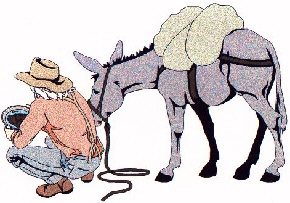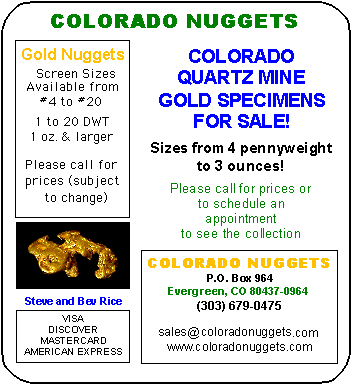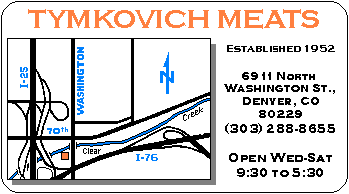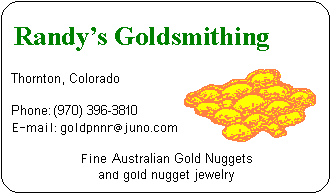 |
| Vol. 7, No. 7 | July 2002 | |
|
Lloyd G. Clements Community Center
7:00 PM (Board Meeting at 6:00 PM)
|
Information gleaned from my recent trip to Alaska - Part 1 of 3
by Carl Sauerland
The name "Alaska" camr from the Eskimo word "Alakshah," and means "mainland." Alaska is bordered by the Arctic and Pacific Oceans, the Bering Strait, the Bering Sea, the Canadian Yukon Territory, and British Columbia. The three geographical regions of Alaska consist of mountainous southern Alaska; the low, broad area of the Interior; and the Arctic. Alaska has wide variations in climate and the famous glaciers can be found in the mountains as far southb as the Canadian Border. The southern part of Alaska has an oceanic climate with no great extremes of temperature.
Alaska was discovered in 1741 by the Russian Vitus Jonassen Bering on his second voyage to determine whether Siberia and North America were linked. Sea otter pelts found on this voyage peaked Russian interest and trappers in Alaska, and for the next 60 years, the Alaskan coast attracted a hoard of Russian fur traders and trappers. These men had only one quest in mind: to get the furs any way possible, including stealing from the native Aleuts. Unfortunately, the Russians did not stop there. They kidnapped and enslaved Aleut women and sometimes massacred Aleut men in the process.
At the beginning of the 18th century, the Russian American Company was formed as a defensive move designed to block of British and Spanish interests in the area. Whaling and fishing were important, and the United States became a commercial rival. In 1821, Russia issued a decree that forbade other nations from harvesting the waters off the coast of Alaska. Unfortunately for the Russian interests, the Alaskan colony was dependent on foreign trade for its survival. The decree was unenforceable. With the outbreak of the Crimean War in 1853, Russia found that her Pacific colonies wer in a vulnerable position. By 1857, the Russian minister to Washington began hinting that the Czar would be willing to sell Alaska to the United States. Negotiaions began in 1859 but the Civil War delayed any further considerations of the sale.
Finally, by March,1867 a purchase price had been set at $7,000,000 and an extra $200,000 was added at the eleventh hour to avoid further negotiations on details of the terms of sale. The total land area purchased was 570,373.6 square miles. On March 30, 1867 Seward and Russian minister Edoard de Stoecki signed the Treaty of Cession. The formal transfer of territory occurred on October 18, 1867. Many Americans thought it was too much money for a large tract of useless land and they called it "Seward's Folly" after William Henry Seward, the man who negotiated the deal.
According to Jack London, gold was discovered as early as 1804 by the Russians in Alaska. London's story in the July 1903 Atlantic Monthly Magazine stated that a Russian governor at Sitka, after being shown about 50 small nuggets, discouraged anyone from talking about th find. He was sure that the news would ecourage a flood of gold rushers and spell the end of his livelihood.
We all know that the news got out, but that's another story.
by Rick Miska
Hi all! It's too dang hot out there! I was out with my kids at a local water park this month, put on plenty of sun lotion, and still got fried. With that in mind, when you are out and about, prospecting or anything else, remember yhour hat and your sunscreen. And, if yoiu will be in the creek, make sure to get waterproof sunscreen.
There is still debate going on as to whether we are allowed to prospect on Clear Creek within Adams County. Hopefully, we will have more info on that at the next meeting. It appears that we are okay on Clear Creek in the canyon. Gary Hawley will have a whole lot of info on that at the next meeting.
I have just made the switch from shooting photo prints to shooting photo slides. I really like it and it makes it easier to share them with others. With that in mind, if any of you have slides related to our hobby, please let me know. I would like to set up a slide show for the September meeting with all of our slides. We could even make a contest out of it, maybe a photo and slide competition. I shot a whole bunch of them during Gary's Central City tour and will shoot a few more in the coming weeks.
That's all I really had this month so see ya at the meeting.
by Gary Hawley
Greetings to all "Gold Prospectors of the Rockies."
We continue to have great meetings. The membership continues to grow and everyone appears to be having a good time. It is the involvement of each member that makes this a great club.
As most of you know, the Jefferson County Open Space now owns all property on both sides of Clear Creek from approxomately Tunnel #1, just west of Golden, to where Highway 6 and 119 meet. (If you are westbound on Highway 6, at the wye the left road goes to Idaho Springs and the right goes to Black Hawk.) One of the rules of Open Space is that nothing can be removed from Open Space property . . . except fish. So, the question of prospecting was raised and a representative of Open Space attended a meeting of the Gold Prospectors of the Rockies (GPR) and explained that no formal rules had been written pertaining to this area.
For several months, I had been in communication with Ms Colleen Gadd, Visitor and Resource Protection Supervisor for Jefferson County Open Space. She had indicated that she would like to have information about the Front Range clubs and what our hobby entails. A suggestion was made that several club members could meet her on Clear Creek and demonstrate whatever prospecting equipment about which she would like information.
About mid-June, Ms Gadd and I set a date, time, and location for a demonstration of prospecting equipment. Approximately 35 members from two clubs, the Gold Prospectors of the Rockies (GPR) of Denver and the Rocky Mountain Prospectors and Treasure Hunters (RMPTH) of Fort Collins, had signed up to help with this activity. With such short notice, however, not everyone could attend the weekday demonstration.
On June 27th at 9:00 AM, I met with 15 gold prospectors who represented the GPR, RMPTH, GPAA (Gold Prospectors Association of America), LDMA (Lost Dutchman's Mining Association), and the GPOC (Gold Prospectors of Colorado), the latter club from Colorado Springs. We met just a little downstream from Mile Marker 261. A quick cleanup of the area netted five bags of trash. By 9:45 AM, everyone had picked a spot on the stream and had their mining equipment in operation.
At 10:00 AM, Ms Gadd arrived, followed shortly by several people from her office and several other governmental offices. There were representatives from Jefferson County Open Space; District Manager, Division of Wildlife; Hiwan Homestead Museum; Jefferson County Planning; Open Space Trails; and Manager, Park Services. In all, eleven people joined the outing to see what this prospecting hobby of ours was all about.
At about noon, an Open Space vehicle drove up and two Open Space officers delivered a cooler full of sodas and many boxes of sandwiches. Ms Gadd's office had supplied lunch for everyone! After lunch, several of the representatives donned waders and continued the tour.
After all had observed and asked questions, Ms Gadd told me how much she appreciated the effort and willingness of the prospectors to gather on such short notice and demonstrate and explain the equipment involved in placer mining. Before this outing, when someone mentioned "dredging" to her, a mental picture of mounds of rock (as in the Fairplay area) came to her mind. Another observer was pleased to know that we do not do hydraulic washing of the mountainside. Other items that met with favor were the fact that we have our own "rules" about fueling gas tanks away from the stream, filling prospect holes, removing not only our own trash but that that others have left behind, and giving back to the community by way of school and organization panning demonstrations.
It is difficult to summarize nearly four hours of involvement with 26 people; there were too many questions, answers, and observations to comment on here. I would like to share with all of you, however, my personal observation: all persons involved with this outing, whether mining or Open Space official, acted in a very professional and courteous manner. Questions were relevant and to the issue at hand. Answers were correct and in the detail needed to answer the questions. I found this to be an excellent way to spend a few hours . . . in the presence of people who respect and enjoy the great Colorado outdoors, and each other.
Ms Gadd made the day complete by advising me that she did not see any reason to stop our mining activities at this point. She gave her approval to continue our small-scale mining activities on Clear Creek as it traverses the Open Space portion of Clear Creek Canyon. I will be asking for written confirmation on this approval and will have it published in the newsletter. Ms Gadd said there would be a rule-making process for this Open Space Park. She will advise me when this process begins and has suggested that we have some input during the process.
I firmly believe that it was the positive, professional attitude of those prospectors involved that contributed to the approval Ms Gadd gave us. Without their help, we may well have lost this beautiful, historic area to live out our fascination with the past and that wonderful elusive metal . . . GOLD!
My personal thanks to all of you!
Gary
From I Never Knew That About Colorado, by Abbott Fay
Many places in Colorado have rather unimaginative or repetitious names: Coal Creeks, Sugarloaf Mountains, Dry Creeks, Crystal Creeks, and various colored mountains.
For sheer pleasure there are Hope Creek (Mineral County), Happy Creek Canyon (Montrose County), Oh Be Joyful Mountain (Gunnison County), Pleasant Valley (Ouray County), Good Point (Delta County), Singing Hills (Elbert County), Happy Jack Spring (Eagle County), Perfecto Creek (Saguache County), and Balm of Giliad Creek (Park County).
Mellow out on Drowsy Water Creek (Grand County), find your fortune in Cloverleaf Valley (Jackson County), or ponder the origin of Kicking Bird Canal (Bent County). Consider Evacuation Creek, which wanders along the Utah border and into Rio Blanco County.
There are others that range from scary to downrght dismal: Desolation Peaks (Larimer County), Dead Cow Rapids (Eagle County), mad Creek (Routt County), Dead Horse Mesa (Montrose County), Devil Creek (Archuleta County), Skull Canyon (Baca County), Starvation Point (Montrose County), Terrible Creek (Montrose County), Terror Creek (Delta County), Mummy Mountain (Rocky Mountain National Park), Terrible Mountain (Gunnison County), Hell's Kitchen overlooks Brimstone Corner (Delta County), Rattlesnake Canyon (Huerfano county), Deadman Creeks (Larimer, La Plata, and Gunnison Counties), Starvation Creek (Saguache County), Poverty Mesa and Calamity Mesa (Montrose County), Disappointment Creek (San Miguel County), Stinkin Spring Creeks (Montezuma and Pueblo Counties), Hell Creek (Lincoln and Kit Carson Counties), Difficult Creek and Troublesome Creek (Rio and Grande Counties), Poison Springs and Creeks (Montrose, Gunnison, Huerfano, and Saguache Counties), Phantom Canyons (Teller, Fremont, and Larimer Counties), and Devil's Back Bone (Boulder County).
Then there are those places informally named after people: Walt's Corner (Las Animas County), Ted's Place (Larimer County), Harry's Creek (Saguache County), John's Gulch (Teller County), Roaring Judy Creek (Gunnison County), Jack's Cabin (Gunnison County), Jack's Creek (Saguache County), Peter's Knob (Montrose County), Nancy Hanks Gulch (Mesa County), and Crazy Woman Gulch (La Plata County).
Lastly, note that the Highway Department changed S.O.B. Hill (Montrose County) to the more pleasant-sounding Blue Mesa.
The donations we take in on the Snack Table pay for the food. We have been receiving a lot less than what we are spending. Three cookies and a soda pop costs a little more than the 50 cents I saw one member donate. I think we have been supplying a good variety of foods. Let's be a little more generous with our donations so we can keep the good food coming.
|
|
Wet Suit For Sale
|
White's V-Sat Wanted
|
|
|






|
is an official publication of the Gold Prospectors of the Rockies, a Denver-based, Colorado nonprofit organization established in 1995 for the enjoyment of gold prospecting and metal detecting. Club meetings are held on the third Wednesday of each month, 7:00 PM, at the Lloyd G. Clements Community Center, 1580 Yarrow Street, Lakewood, Colorado (1 block west of Wadsworth, 1 block north of Colfax). Individual or family membership fees are $30.00 for the first year, $25.00 for each subsequent year. Non-commercial business-card-sized classified text ads for members are free of charge. Commercial display ads must be detecting, prospecting, or treasure related and are available to anyone at a modest charge: 1/8 page (approximately 2"h x 3.5"w business card size) - $6.00 per month. 1/4 page (approximately 4"h x 3.5"w) - $12.00 per month. 1/2 page (approximately 4"h x 7"w or 8.5"h x 3.5"w) - $24.00 per month. Full page (approximately 8.5"h x 7"w) - $48.00 per month. The Gold Nugget is open to and gladly accepts submission of information and articles. All article submissions must be received by the editor no later than the first Wednesday of the month for inclusion in the next month's issue. The GPR must receive any required payments for commercial ads prior to their inclusion. Include publication information on articles clipped from other publications. The Editor reserves the right to edit all submissions. Bulletin editors may print any article from this newsletter with credit given to the newsletter and the author. Contact: The Gold Nugget Editor, The Gold Prospectors of the Rockies, PO Box 621988, Littleton, CO 80162-1988. E-mail: The Gold Nugget Editor. |